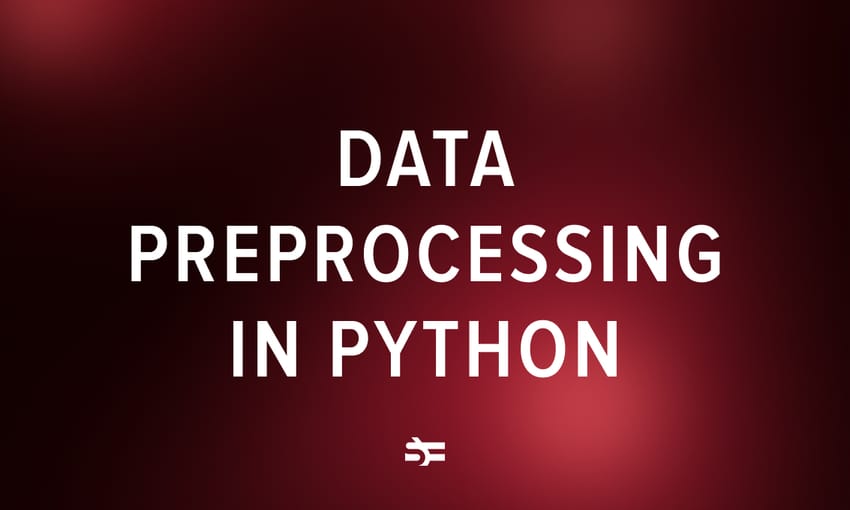According to statistics, Python is the second most popular programming language in the world. There are more than 600,000 Python jobs in the world, which makes up to 20% of all programming jobs. Even though Python is more than thirty years old, it still doesn’t lose its popularity.
In this article, you will learn about the pros and cons of Python that make this programming language so special. If you’re a beginner programmer, this article might convince you to learn Python first.
Pros of Python
Python has many benefits that make it a go-to programming language to learn by beginner programmers.
1. Beginner friendly
Python is a programming language that is widely known for being beginner friendly. One of the main reasons why Python is considered easy to learn is its simple syntax. Python code is easy to read and understand, which makes it easier for beginners to write and debug code.
Another reason why this language is beginner-friendly is its versatility. Python can be used for a wide range of applications, from Python web development to data analysis and machine learning. This means that beginners can choose a domain that interests them and start learning Python in a context that is relevant to their interests.
Python also has many resources, such as online tutorials, video courses, and interactive coding platforms. These resources provide step-by-step guidance and help you build your skills in a structured way.
2. Well-supported
Python has a vast and active community of developers, and is known for being friendly, welcoming, and supportive. You can find support in social media groups and online forums, regardless of the language that you speak.
The Python community is also very active in contributing to open-source projects. There are many open-source libraries and frameworks available in Python that are maintained by the community.
When you learn a new language, it’s vital to have a community where you can ask questions to more experienced professionals and get their feedback.
3. Flexible
Python is a high-level language, which means that it is easy to read and write, with a focus on abstracting away low-level details and providing a higher level of abstraction. However, it is also a powerful language that can be used for complex projects.
One of the main reasons why Python is so flexible is its extensive library of modules and packages. These libraries provide pre-written code that can be easily integrated into a project, saving developers time and effort. Additionally, Python can be used for web development, data analysis, machine learning, and scientific computing, among other applications.
Python’s flexibility also comes from its ability to work with other languages. It can be easily integrated with languages like C++ and Java, allowing developers to use Python for specific tasks alongside other languages for other parts of a project.
4. Multiple libraries
Python’s extensive library of modules and packages is one of its biggest strengths. These libraries provide pre-written code that can be easily integrated into a project, saving developers time and effort. Python has a vast collection of libraries that are constantly growing and evolving to meet the needs of developers.
Some popular Python libraries include NumPy, which provides support for numerical computations and scientific computing, Pandas, which is used for data analysis and manipulation, Matplotlib for data visualization, and Scikit-Learn for machine learning tasks.
Python also has libraries for web development, such as Django and Flask, which make it easy to build web applications. Other libraries like BeautifulSoup and Scrapy are used for web scraping and data extraction.
Python’s libraries also make it easy to work with databases, such as SQLite, MySQL, and PostgreSQL. Libraries like Pygame and PyOpenGL are used for game development and computer graphics.
5. Embeddable
Python is embeddable, which means that it can be integrated into other programming languages and applications. This is useful for developers who want to add Python functionality to existing software or build custom applications with Python as a scripting language.
For example, Python can be embedded into C++ applications using the Boost.Python library, or into Java applications using Jython. This allows you to take advantage of Python’s strengths while still using your preferred programming language.
6. Highly scalable
Python is scalable: It can handle large amounts of data and support distributed computing. Python’s libraries and frameworks, including NumPy, Pandas, and PySpark, allow developers to process and analyze large datasets efficiently.
Python’s support for parallel processing and distributed computing through libraries like Dask and Apache Spark also allows for scalable data processing across multiple machines. This makes Python a popular choice for big data processing and machine learning applications.
7. Prototyping-friendly
Python’s simplicity and ease of use make it an ideal language for prototyping. Its syntax is concise and straightforward, making it easy to write code quickly and experiment with different ideas. Python’s vast library of pre-built modules also makes it easy to incorporate existing code into their projects, saving time and effort.
Furthermore, Python’s interactive shell and Jupyter Notebook enable you to test code snippets and visualize data in real-time, making it easy to iterate on ideas and refine their approach. This rapid prototyping capability is particularly useful in fields such as data science, where experimentation and exploration are key components of the development process.
Cons of Python
Despite its many advantages, Python also has some drawbacks that developers should be aware of.
1. Slower than compiled languages
One of the main disadvantages of Python is that it is slower than compiled languages such as C++ or Java. This is because Python is an interpreted language, which means that each line of code is executed one at a time by the interpreter. In contrast, compiled languages are converted into machine code before they are executed, which makes them faster.
This speed difference can be particularly noticeable when working with large datasets or performing complex calculations. In these cases, Python may not be the best choice for performance-critical applications. However, it’s worth noting that there are ways to optimize Python code and improve its performance, such as using NumPy for numerical operations or Cython for compiling Python code to C.
Despite its performance limitations, Python remains a popular language for prototyping and experimentation due to its ease of use and a vast library of modules. Developers who need to optimize their code for performance-critical applications may need to consider other languages or tools, but for many applications, Python’s strengths outweigh its weaknesses.
2. Less secure
In terms of security, Python is considered to be less secure than some other programming languages such as Java or C++. This is because Python is a dynamically typed language, which means that data types are determined at runtime rather than at compile time. This can lead to vulnerabilities, including buffer overflows or injection attacks.
Additionally, Python’s popularity and ease of use make it a popular target for hackers looking to exploit vulnerabilities in code. The vast number of third-party libraries and modules available for Python can also pose a security risk if they are not properly vetted for vulnerabilities.
However, it’s worth noting that Python does have built-in security features such as its standard library’s “os” module, which provides secure ways to access files and directories. Additionally, there are third-party tools and libraries available for Python that can help improve security, such as the PyCryptodome library for encryption and hashing.
3. Not ideal work environment
One potential drawback of using Python in a work environment is that it may not be the best fit for all types of projects or teams. For example, if a project requires high performance or low-level system access, a language like C++ may be a better choice.
Moreover, Python’s dynamic nature and lack of strong typing can make it more difficult to maintain and debug code as projects grow larger and more complex. This can lead to increased development time and costs, as well as potential errors or security vulnerabilities.
4. Bad memory consumption and garbage collection
Memory consumption and garbage collection are two additional potential drawbacks of using Python for real-life tasks. Python’s dynamic nature and interpreted execution can lead to higher memory usage compared to compiled languages like C++. This can be especially problematic in resource-constrained environments, such as embedded systems or mobile devices.
Moreover, Python’s garbage collection process can impact performance and introduce unpredictable behavior. Garbage collection is the automatic process of freeing up memory that is no longer being used by a program. While this can simplify memory management for developers, it can also lead to performance issues if the garbage collector runs too frequently or inefficiently.
Plus, Python’s garbage collector may not always release memory as quickly or efficiently as desired, leading to potential memory leaks or other issues. This can be particularly problematic in long-running applications or those with high memory requirements. Careful planning and optimization may be necessary to ensure that Python-based applications perform well and meet the needs of end-users.
5. Dynamically typed
Dynamic typing is another potential drawback of using Python in a work environment. Python allows you to change the data type of a variable at runtime, without the need for explicit type declarations. While this can make code more flexible and easier to write, it can also lead to errors and unexpected behavior.
For example, if you assign a string value to a variable and later try to perform a mathematical operation on that variable, Python will raise a TypeError. This can be frustrating for developers who are used to more strict type checking in other languages.
In addition, dynamic typing can make it more difficult to debug and maintain code, as it may not be immediately clear what data types are being used in a particular section of code. This can lead to subtle bugs and performance issues that are difficult to diagnose and fix.
6. Poor multithreading
While Python does have a threading module, it is not truly multithreaded due to the Global Interpreter Lock (GIL). The GIL ensures that only one thread can execute Python bytecode at a time, even on multi-core systems. This means that while multiple threads can be created in Python, they cannot run in parallel, limiting the potential performance gains from using multithreading.
This can be a disadvantage for applications that require high levels of concurrency or parallelism, such as scientific computing or real-time systems. However, there are workarounds such as using multiprocessing or using other languages with Python for specific tasks that require true multithreading support.
Conclusion
Python is a popular programming language that offers many benefits: ease of use, readability, and a large community of developers. However, it also has some limitations, such as slower performance compared to compiled languages, memory management issues, dynamic typing, and version compatibility.
Overall, Python is a versatile language that can be used for a wide range of applications, from web development to machine learning and data analysis.







.jpg)
.jpg)